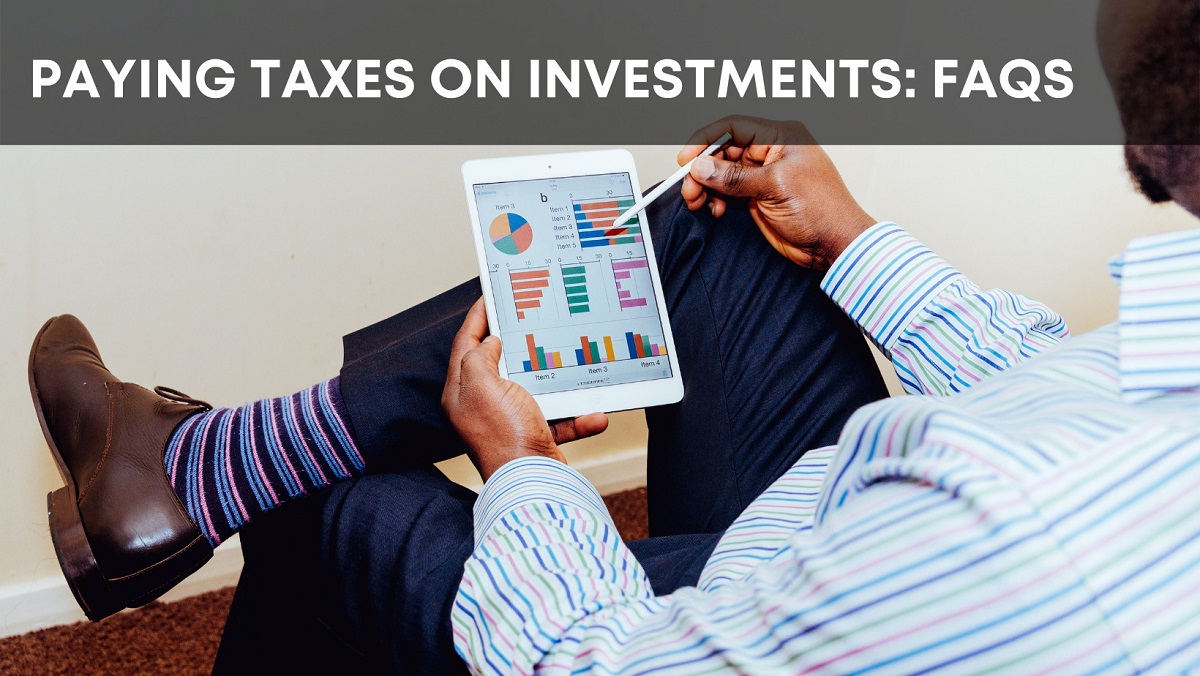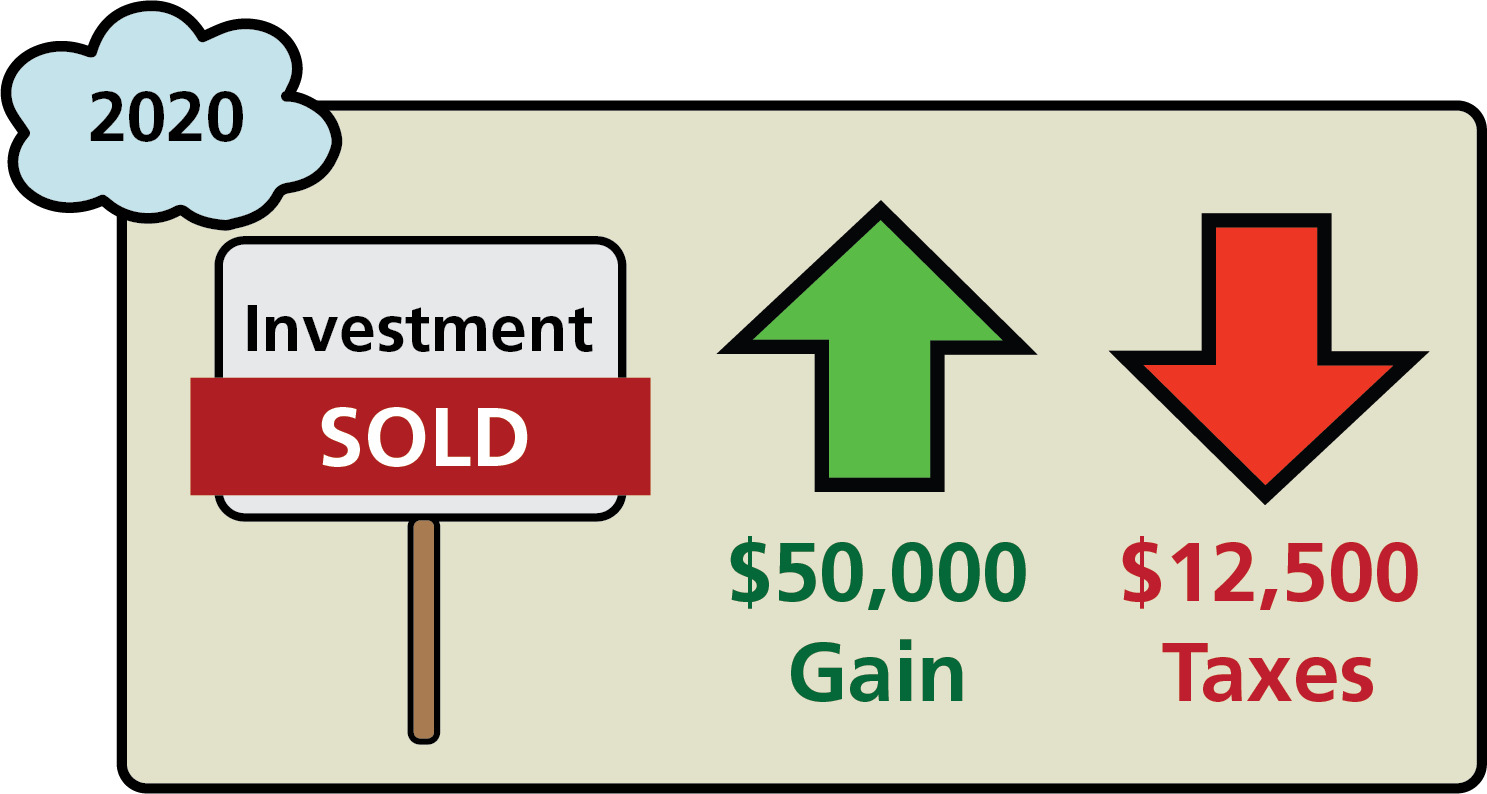What are Cashless Non-Qualified Stock Options?
Cashless non-qualified stock options are a type of stock option granted by companies to their employees as a form of compensation. They provide employees with the right to purchase company stock at a predetermined price, known as the exercise price, at a future date. Unlike qualified stock options, which can qualify for favorable tax treatment, cashless non-qualified stock options do not meet specific requirements set by the Internal Revenue Service (IRS).
One key characteristic of cashless non-qualified stock options is that employees don’t have to pay the exercise price out of pocket. Instead, they can choose to exercise their options and immediately sell the acquired shares on the open market. The proceeds from the sale are then used to cover the exercise price and any applicable taxes.
These stock options are often granted to employees as part of their overall compensation package. They can be a valuable way for employees to participate in their company’s success and potentially earn additional income.
It’s important to note that cashless non-qualified stock options are different from qualified stock options, also known as incentive stock options (ISOs). While both types of stock options can provide employees an opportunity to purchase company stock, there are significant differences in terms of eligibility requirements, tax treatment, and exercise rules.
Cashless non-qualified stock options are more common among private companies or smaller public companies that may not meet the requirements for qualified stock options. These types of stock options often come with more flexibility in terms of exercise and sale. However, they also come with different tax implications that employees should be aware of before exercising their options.
Differences between Cashless and Qualified Stock Options
Cashless non-qualified stock options and qualified stock options (also known as incentive stock options or ISOs) have some significant differences that employees should understand before making decisions regarding exercising their options. Here are the key distinctions:
1. Eligibility Criteria: Qualified stock options are subject to strict eligibility requirements. They can only be granted to employees, must be issued within 10 years of the adoption of the stock option plan, and the exercise price must not be lower than the fair market value on the date of grant. Cashless non-qualified stock options, on the other hand, have fewer eligibility restrictions and can be granted to employees, directors, consultants, and other service providers.
2. Tax Treatment: The tax treatment of cashless non-qualified stock options and qualified stock options diverges significantly. Qualified stock options have the potential for more favorable tax treatment. When ISOs are exercised and held for at least one year after the exercise date and two years after the grant date, the subsequent gain on the sale of the stock may qualify for long-term capital gains tax rates. Cashless non-qualified stock options, however, do not qualify for this preferential tax treatment and are subject to different tax rules.
3. Exercise Price and Holding Period: Qualified stock options have a higher degree of restrictions when it comes to exercise price and holding periods. The exercise price must be equal to or greater than the fair market value of the stock on the grant date, and there is a mandatory holding period to receive favorable tax treatment. Cashless non-qualified stock options provide more flexibility in terms of exercise price and holding periods, allowing employees to sell the shares immediately after exercise.
4. Company Size and Reporting Requirements: Qualified stock options are more commonly offered by larger public companies, while cashless non-qualified stock options are often granted by private companies or smaller public companies. There are also different reporting requirements for each type of stock option, with qualified stock options requiring additional reporting on employees’ tax returns and company filings.
Overall, it’s essential for employees to understand the differences between cashless non-qualified stock options and qualified stock options before making any decisions about exercising their options. Consulting with a financial advisor or tax professional can provide additional guidance and help employees navigate through the complexities of stock option taxation.
How are Cashless Non-Qualified Stock Options Taxed?
Understanding the tax implications of cashless non-qualified stock options is crucial for employees who have been granted these options as part of their compensation. Here are the key factors to consider:
1. Ordinary Income Tax: The difference between the fair market value (FMV) of the stock at the time of exercise and the exercise price is treated as ordinary income and is subject to ordinary income tax rates. This amount is typically included in the employee’s Form W-2 and must be reported as part of their taxable income for the year in which the options are exercised.
2. Additional Medicare Tax: Employees may also be subject to the Additional Medicare Tax if their income, including the gain from the exercise of cashless non-qualified stock options, exceeds certain thresholds. The Additional Medicare Tax rate is 0.9% on earned income above the threshold amounts.
3. Capital Gains Tax: If the employee sells the acquired shares after exercising their cashless non-qualified stock options, any gain or loss (the difference between the sale price and the FMV at the time of exercise) is subject to capital gains tax. The tax rate depends on the holding period of the shares. If the shares are held for less than one year, the gain is considered short-term and taxed at the employee’s ordinary income tax rates. If the shares are held for one year or more, the gain is considered long-term and taxed at the applicable long-term capital gains tax rates.
4. Withholding Taxes: Employers are typically required to withhold taxes at the time of exercise for cashless non-qualified stock options. The amount withheld depends on the employee’s income and the applicable tax rates. It’s important for employees to review their withholding and consult with a tax professional to ensure they have enough funds set aside to cover their tax obligations.
5. State and Local Taxes: In addition to federal taxes, employees must also consider state and local taxes on the income and capital gains from cashless non-qualified stock options. The tax rates and rules vary from state to state, so it’s advisable to consult with a tax professional familiar with the specific tax laws in the employee’s jurisdiction.
Employees who are granted cashless non-qualified stock options should carefully consider the tax implications before exercising their options. Working with a tax professional or financial advisor can help employees navigate the complexities of stock option taxation and develop strategies to minimize their tax liabilities.
Short-term Capital Gains Tax on Cashless Non-Qualified Stock Options
When employees exercise their cashless non-qualified stock options and sell the acquired shares within a year of exercise, any gain is considered a short-term capital gain. Here’s what you need to know about the tax implications:
1. Tax Rate: Short-term capital gains are taxed at the employee’s ordinary income tax rates, which can be significantly higher than long-term capital gains tax rates. The exact tax rate depends on the employee’s overall income and tax bracket.
2. Inclusion in Taxable Income: The gain from the sale of the shares obtained through the exercise of cashless non-qualified stock options is considered part of the employee’s taxable income for the year in which the sale occurred. This means it is subject to regular income tax rates and may also be subject to additional Medicare tax if the employee’s income exceeds certain thresholds.
3. Withholding Taxes: Employers are typically required to withhold taxes at the time of exercise and sale for cashless non-qualified stock options. The amount withheld is based on the employee’s income and the applicable tax rates. It’s important to carefully review the withholding and ensure that enough taxes are withheld to cover the employee’s tax obligations.
4. Timing: The holding period for short-term capital gains is one year or less. If the employee sells the acquired shares within this timeframe, any gain will be subject to short-term capital gains tax. It’s important to factor in the timing of the sale when considering the tax implications of exercising cashless non-qualified stock options.
5. Minimizing Tax Liability: While short-term capital gains are typically subject to higher tax rates, there are strategies that employees can consider to minimize their tax liability. For instance, timing the exercise and sale of the stock options to fall within a tax year with lower income can help reduce the overall tax burden. Additionally, tax-loss harvesting, where the employee sells other investments at a loss to offset the short-term capital gains, can also be an effective strategy.
Understanding the tax consequences of short-term capital gains on cashless non-qualified stock options is important for employees looking to make informed decisions about their stock options. Consulting with a tax professional can provide additional guidance on strategies to minimize tax liability and optimize the timing of stock option exercises and sales.
Long-term Capital Gains Tax on Cashless Non-Qualified Stock Options
When employees exercise their cashless non-qualified stock options and hold the acquired shares for more than one year before selling, any gain is considered a long-term capital gain. Here’s what you need to know about the tax implications:
1. Tax Rate: Long-term capital gains are generally taxed at lower rates compared to ordinary income tax rates. The exact tax rate depends on the employee’s total taxable income and their tax bracket. For most individuals, the long-term capital gains tax rate ranges from 0% to 20%.
2. Inclusion in Taxable Income: The gain from the sale of the shares obtained through the exercise of cashless non-qualified stock options is included in the employee’s taxable income for the year of the sale. However, the long-term capital gains tax rate applies to this gain, which can result in significant tax savings compared to short-term capital gains tax rates.
3. Holding Period: To qualify for long-term capital gains tax rates, the employee must hold the acquired shares for at least one year from the exercise date and two years from the grant date. Selling the shares before meeting this holding period will result in the gain being treated as a short-term capital gain.
4. Planning for Optimal Tax Savings: Choosing the right time to exercise and sell cashless non-qualified stock options can play a significant role in maximizing tax savings. By carefully planning the timing of the exercise and sale, employees can ensure that they qualify for long-term capital gains tax treatment, which can lead to substantial tax advantages.
5. Net Investment Income Tax: It’s important to note that high-income earners may be subject to an additional 3.8% Net Investment Income Tax (NIIT) on the long-term capital gains derived from cashless non-qualified stock options. The NIIT applies to individuals with modified adjusted gross incomes above certain thresholds.
Understanding the tax implications of long-term capital gains on cashless non-qualified stock options is crucial for employees looking to optimize their tax strategy. Consulting with a tax professional can provide valuable guidance on timing the exercise and sale of stock options to leverage the favorable long-term capital gains tax rates and minimize any potential tax liabilities.
Withholding Taxes on Cashless Non-Qualified Stock Options
When employees exercise their cashless non-qualified stock options, employers are typically required to withhold taxes at the time of exercise. Here’s what you need to know about withholding taxes on cashless non-qualified stock options:
1. IRS Requirements: The Internal Revenue Service (IRS) requires employers to withhold taxes on the difference between the fair market value of the stock at the time of exercise and the exercise price. This amount is considered ordinary income and is subject to federal income tax withholding.
2. Tax Reporting: Employers are required to report the amount of income from the exercise of cashless non-qualified stock options on the employee’s Form W-2. This means that the amount withheld for federal income tax purposes will be reflected in Box 1 (Wages, tips, other compensation) of the Form W-2. Employees must include this amount when reporting their total taxable income on their annual tax return.
3. Withholding Rates: The amount of taxes withheld for cashless non-qualified stock options depends on the employee’s income and the applicable tax rates. The withholding rates can vary, but they are generally based on the employee’s overall income and the withholding tables provided by the IRS.
4. Additional Medicare Tax: In addition to federal income tax withholding, employers may also be required to withhold the Additional Medicare Tax if the employee’s income exceeds certain thresholds. The Additional Medicare Tax rate is 0.9% on earned income above the threshold amounts set by the IRS.
5. State and Local Withholding: In addition to federal tax withholding, employers may also be required to withhold state and local taxes on the income from cashless non-qualified stock options. The state and local withholding rates and requirements vary depending on the employee’s jurisdiction.
It’s important for employees to review their withholding and ensure that enough taxes are being withheld to cover their tax obligations. Depending on the employee’s individual circumstances, they may need to adjust their withholding or make estimated tax payments to avoid underpayment penalties. Consulting with a tax professional or financial advisor can provide personalized guidance on tax planning and ensure compliance with tax withholding requirements.
Reporting Cashless Non-Qualified Stock Options on Your Tax Return
When it comes to reporting cashless non-qualified stock options on your tax return, it’s essential to understand the necessary steps to accurately report this income and comply with tax regulations. Here’s what you need to know:
1. Form W-2: The amount of income recognized from the exercise of cashless non-qualified stock options is typically reported on your Form W-2. This amount is included in Box 1 (Wages, tips, other compensation) of the Form W-2, and you must include it when reporting your total taxable income on your tax return.
2. Form 1099-B: If you sold any shares acquired through the exercise of cashless non-qualified stock options, you may receive a Form 1099-B from your broker or the entity handling the stock sale transaction. This form reports the proceeds from the sale and serves as a record of the transaction. You must use the information provided on this form to report the sale of stock on your tax return.
3. Capital Gains and Losses: If you sold the acquired shares within one year of exercise, any gain is categorized as a short-term capital gain. If you sold the shares after holding them for more than one year, any gain is categorized as a long-term capital gain. Report the details of these transactions on Schedule D of your tax return.
4. Cost Basis: The cost basis of the shares is crucial for determining the gain or loss on the sale. For cashless non-qualified stock options, the cost basis is typically the fair market value (FMV) of the stock on the exercise date. The FMV is usually provided on the Form 1099-B. However, it’s important to verify this information and consult your broker or tax advisor if there are any discrepancies or uncertainties.
5. Additional Reporting Forms: In some cases, you may need to report additional information related to cashless non-qualified stock options on your tax return. This can include reporting foreign financial accounts on FinCEN Form 114 (FBAR) if you held shares in a foreign account or reporting transactions with certain foreign corporations on Form 8938 (Statement of Specified Foreign Financial Assets). Make sure to consult with a tax professional if you have any international tax considerations.
Remember, accurately reporting cashless non-qualified stock options on your tax return is crucial to comply with IRS regulations and avoid potential tax penalties. If you have any questions or uncertainties about how to report your stock options, it’s advisable to consult with a tax professional or accountant who can provide personalized guidance based on your specific situation.
Strategies to Minimize Taxes on Cashless Non-Qualified Stock Options
When it comes to cashless non-qualified stock options, there are several strategies employees can consider to minimize their tax liabilities. Here are some effective strategies to keep in mind:
1. Timing of Exercise and Sale: Timing is crucial when it comes to maximizing tax savings. Consider the timing of exercising your options and selling the acquired shares. By strategically planning the timing of these actions, you can potentially take advantage of lower tax rates. For example, if you expect your income to be lower in a particular year, it may be beneficial to exercise and sell during that year to reduce your overall tax burden.
2. Hold Shares for Long-term Capital Gains Treatment: If you believe in the long-term potential of the company’s stock, you may consider holding onto the acquired shares for at least one year and two years from the grant date to qualify for long-term capital gains treatment. This can result in significant tax savings since long-term capital gains are typically taxed at lower rates than ordinary income.
3. Tax-Loss Harvesting: If you have other investments that have experienced losses, you can consider selling those investments to offset the gains from cashless non-qualified stock options. This strategy, known as tax-loss harvesting, can help reduce your overall tax liability by offsetting the taxable gains with the losses.
4. Charitable Contributions: If you are charitably inclined, you can donate some of the acquired shares to a qualified charitable organization. By doing so, you may be eligible for a charitable deduction equal to the fair market value of the shares at the time of donation, effectively reducing your taxable income.
5. Estate Planning: If you have a high net worth and are considering passing on your wealth to future generations, you may explore estate planning strategies such as gifting or utilizing trusts. These strategies can help reduce the size of your taxable estate and potentially minimize the tax impact on your cashless non-qualified stock options.
It’s important to note that these strategies should be pursued in consultation with a tax professional or financial advisor who can assess your individual circumstances and provide personalized guidance. Each individual’s tax situation is unique, and what may work for one person may not be suitable for another. By leveraging these strategies and seeking professional advice, you can effectively minimize your tax liability while making the most of your cashless non-qualified stock options.
Important Considerations when Exercising Cashless Non-Qualified Stock Options
When it comes to exercising cashless non-qualified stock options, there are several important considerations that employees should keep in mind. Here are some key factors to consider before making your decision:
1. Tax Implications: One of the primary considerations when exercising cashless non-qualified stock options is the tax implications. Understand how the exercise will impact your taxable income and potential capital gains tax. Consulting with a tax professional can help you assess the tax consequences and develop a tax strategy that aligns with your financial goals.
2. Market Conditions: Monitoring the market conditions is essential when deciding when to exercise your cashless non-qualified stock options. Consider factors such as the current stock price, market volatility, and overall economic outlook. Exercising when the stock price is high can maximize your potential gain, while exercising during a bearish market may result in less favorable outcomes.
3. Financial Goals: Consider your financial goals and personal circumstances before exercising your stock options. Evaluate whether the timing aligns with your short-term or long-term financial objectives. If you need immediate cash or have a specific financial milestone in mind, it may influence the timing and decision to exercise.
4. Diversification: Take into account the diversification of your investment portfolio. If a significant portion of your wealth is tied to your employer’s stock, exercising your cashless non-qualified stock options may provide an opportunity to diversify your investment holdings. Consider the potential benefits of diversification and speak with a financial advisor to determine the appropriate allocation for your investment strategy.
5. Company Stability: Assess the stability and future prospects of your employer. Consider factors such as the financial health of the company, industry trends, and growth potential. Exercising your stock options may carry more risks if the company faces challenges or uncertainty. Conduct thorough research and seek professional advice to evaluate the company’s outlook before making your decision.
6. Liquidity Needs: Evaluate your immediate and future liquidity needs. Exercising your cashless non-qualified stock options may require you to sell the acquired shares. Consider any short-term financial commitments or goals you have and ensure you have sufficient liquidity for those needs after exercising your options.
7. Option Expiration: Be aware of the expiration dates for your stock options. If you fail to exercise your options before the expiration date, you may lose the opportunity to benefit from them. Stay informed about option expiration dates and plan accordingly to avoid missing out on potential gains.
Before exercising your cashless non-qualified stock options, carefully evaluate these considerations to make an informed decision that aligns with your financial objectives and risk tolerance. Consulting with a financial advisor or tax professional can provide valuable guidance and help you navigate through the complexities of exercising your stock options.
Conclusion
Cashless non-qualified stock options can be a valuable component of an employee’s compensation package. However, it is crucial to understand the tax implications, differences from qualified stock options, and important considerations before exercising these options.
By grasping the tax treatment of cashless non-qualified stock options, employees can effectively plan their finances and minimize their tax liabilities. Whether it’s understanding short-term and long-term capital gains tax rates or considering strategies to offset gains with losses, careful tax planning is essential.
Furthermore, employees should be aware of the distinctions between cashless and qualified stock options. The eligibility criteria, tax treatment, and exercise rules vary, making it vital to determine the most suitable option for your specific situation.
Considering important factors such as market conditions, financial goals, and Company stability when deciding to exercise cashless non-qualified stock options can help employees make informed decisions. Timing the exercise and sale of stock options strategically can provide opportunities to maximize gains and minimize tax obligations.
Lastly, it is crucial to consult with professionals such as tax advisors and financial planners who can provide personalized advice tailored to your circumstances. They can help ensure compliance with tax regulations, optimize tax savings, and guide you through the complexities associated with cashless non-qualified stock options.
By understanding the nuances and carefully considering all aspects, employees can make the most of their cashless non-qualified stock options and navigate the tax landscape effectively.

























